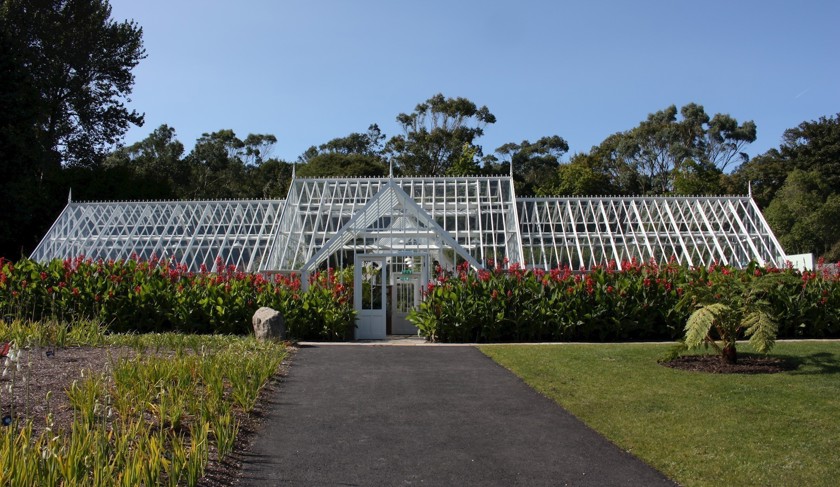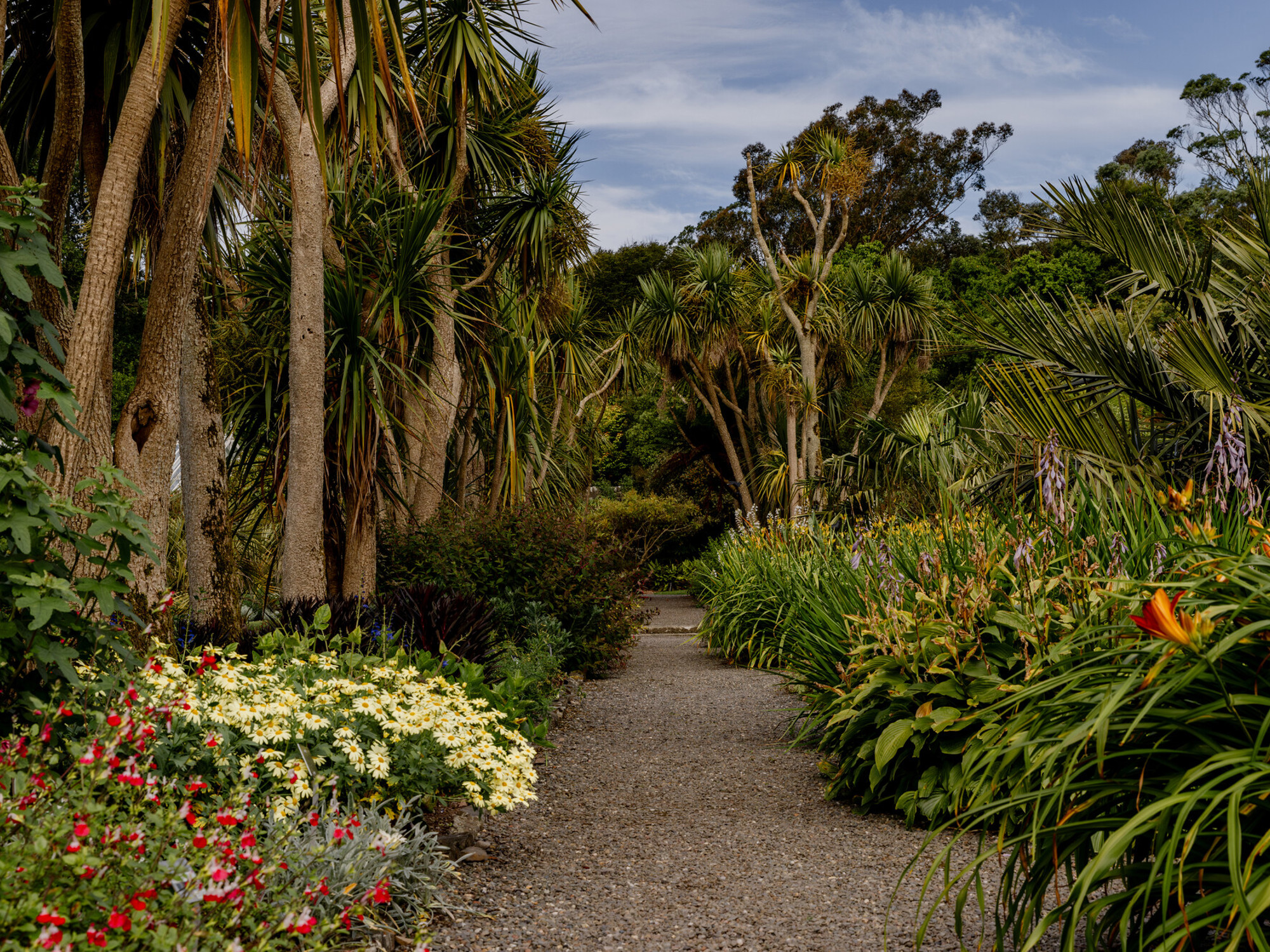
The Living Collection at Logan
The mild climate at Logan allows a focus on plants from the southern hemisphere, and especially Australia, South and Central America and Southern Africa.
Highlights of the collection
Plants from Australia and New Zealand
Many plants from Australia and New Zealand have been grouped together forming an antipodean forest in the South Woodland that gives the visitor a true sense of the place, especially in the Tasmanian Creek with its mass planting of eucalyptus and tree ferns. Logan grows about 35 species of Eucalyptus, all recognisable by their pale bluish-green foliage and often striking textured bark, such as the snow gum (E. pauciflora) which dominates the north-west corner of the Walled Garden.
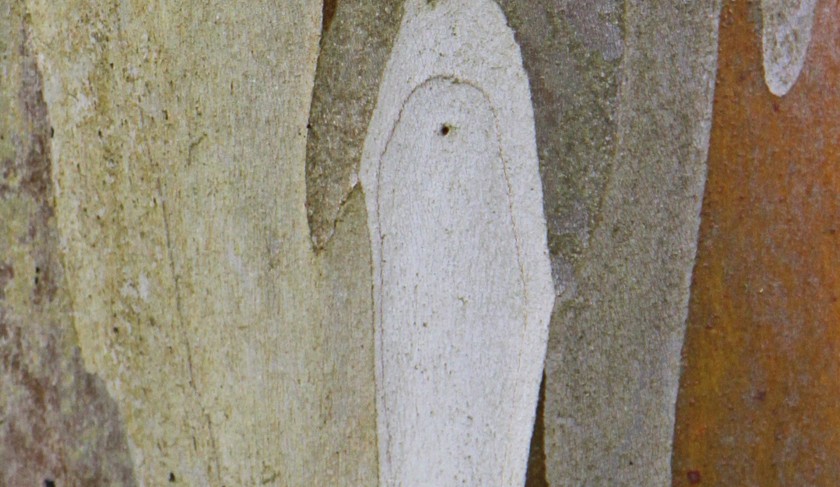
Tree ferns are undoutedly the most striking of all antipodean plants at Logan. The majestic but slow-growing Dicksonia antarctica can reach up to 12m high in the wild; at Logan the tallest have reached more than 4m and are thought to be more than 150 years old. A more recent addition is Cyathea dealbata - the emblem on the jerseys of the All Blacks rugby team.
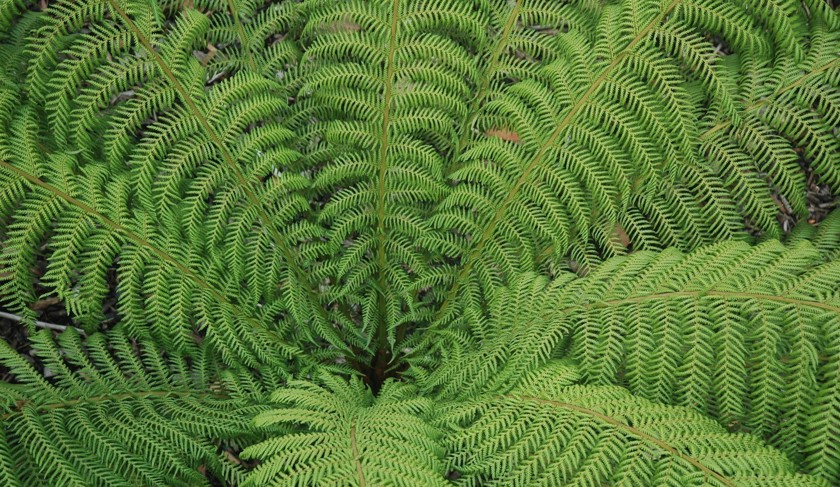
The cabbage palm or Cordyline australis was first planted at Logan in 1909 and two other species can be found in the Walled Garden - the shrub-like C. banksii and the spiky-leaved C. indivisa.
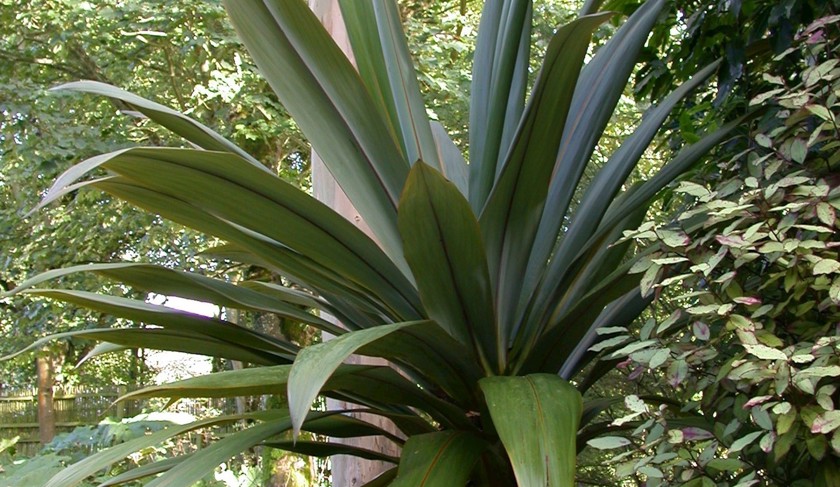
New Zealand and Scotland have similar climates so it is not surprising that several species from New Zealand do well at Logan. Among the most beautiful is the Southern Rata (Metrosideros umbellata), a woody plant found in the Middle Walled Garden, which has bright red flowers in July and August.
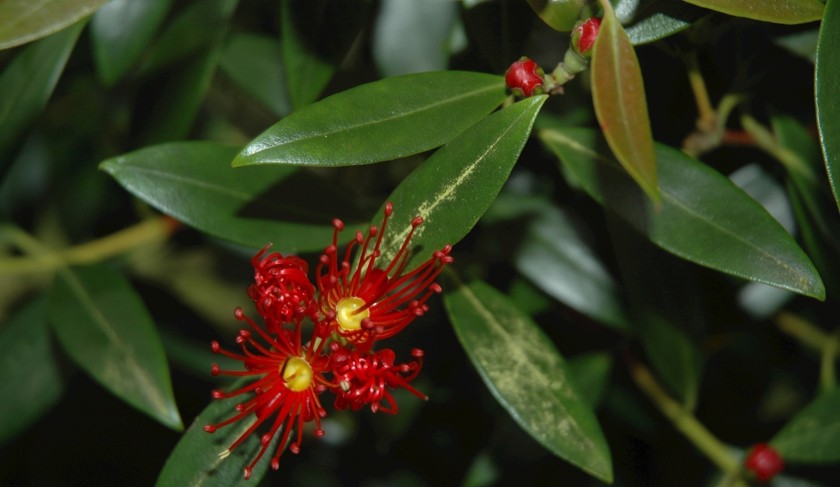
Several species of Callistemon are grown at Logan. Looking at the flower spikes, it is easy to see why plants of this genus are commonly known as bottle brushes. Among those grown are the yellow-flowered C. viridiflorus, which can be seen in the Eucryphia border in the Lower Walled Garden and the Castle Woodland.
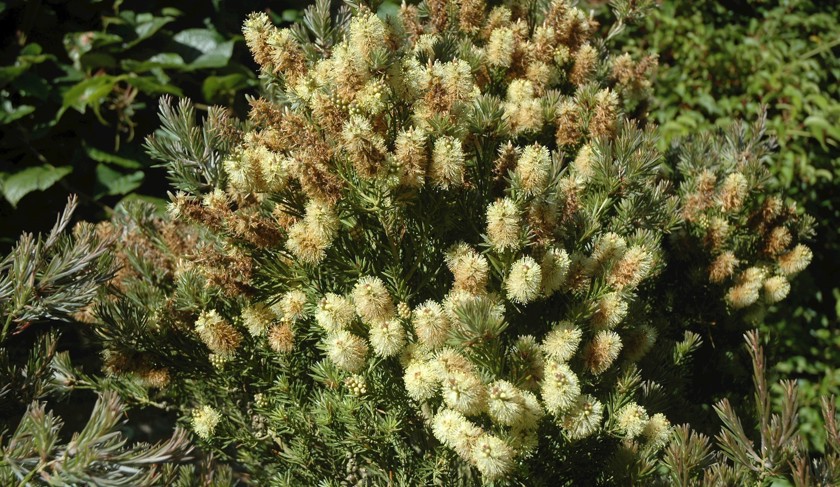
Lobster's claw (Clianthus puniceus), so-named because of the distinctive shape of its vivid red flowers, native to New Zealand and critically endangered in the wild, thrives on the perimeter garden wall leading up to the Conservatory.
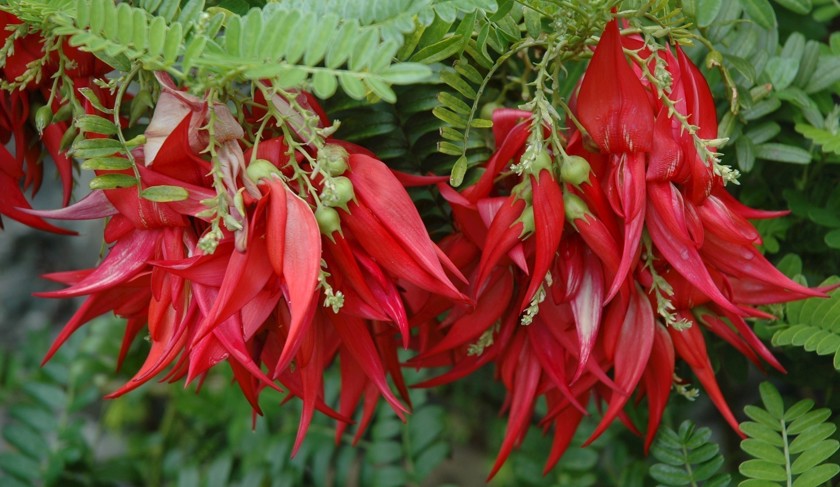
Plants from South America
RBGE staff have made several collecting trips to South America, particularly Chile, providing Logan with a wealth of plants that visitors are fortunate enought to be able to admire out of doors.
Chilean highlights at the Garden include a member of Bromeliaceae, the pineapple family, Fascicularia bicolor (canaliculata ssp. bicolor) has rosettes of narrow spiny leaves that redden at the base and enclose a compact head of blue flowers in the autumn. From the same family comes the more unusual Ochagavia carnea, another stunning bromeliad which you can find on the lower terrace below Castle Balzieland. It produces large pink flower heads in mid-summer.
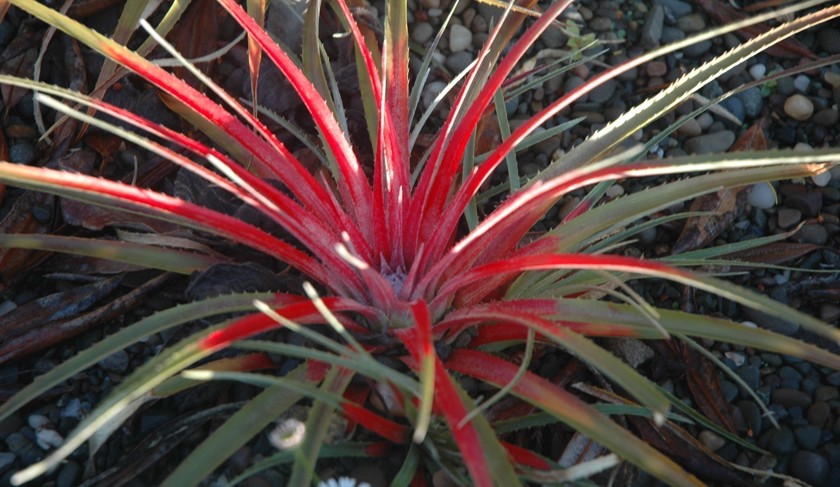
Chile's national flower, Lapageria rosea, a graceful climber produces beautiful crimson flowers throughout autumn and winter.
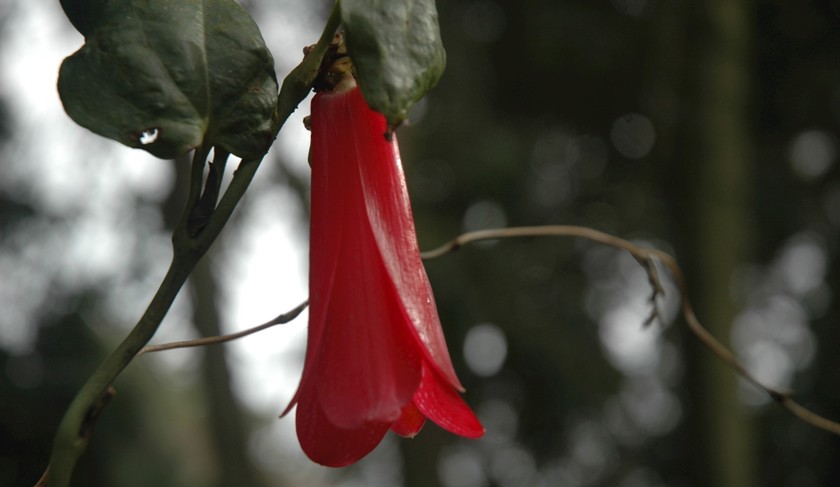
From south-east Brazil comes the giant, rhubarb-like Gunnera manicata , one of the largest of the Gunnera species. In spring, the plant develops large, cone-shaped flower spikes covered in thousands of tiny greenish flowers. This is followed by the growth of an enormous canopy of barbed leaves up to 2.5m across, raised on stalks up to 3m high. The Gunnera Bog becomes a virtually impenetrable forest in summer, with some 50 species of Gunnera, varying widely in their leaf size. Near the head of the Rock Gully and elsewhere in the Woodland Garden can be seen the closely related but relatively tiny G. magellanica, with leaves a mere 50mm across.
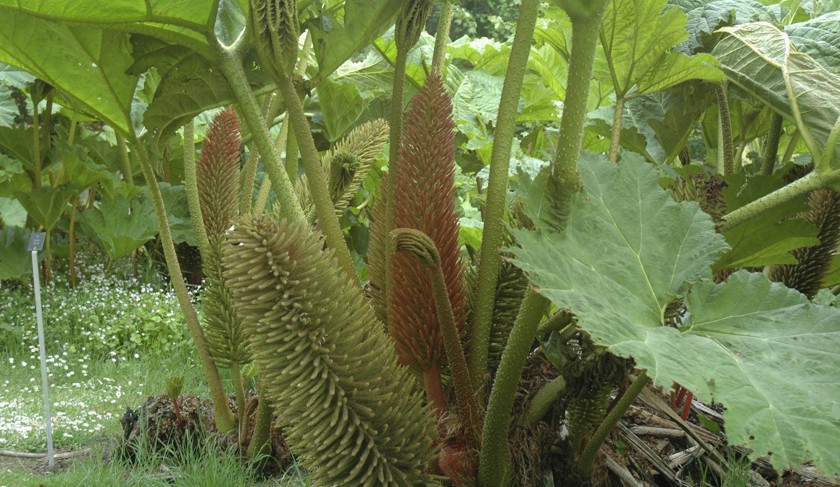
The Argentinian shrub Polylepsis australis, with its distinctive flaking, reddish-brown, papery bark, can be found beside the west wall of the Lower Walled Garden. This dramatic specimen is a member of the rose family and has been reported growing 5,000m above sea level in the Andes, where its many layers of bark protect it from the cold.
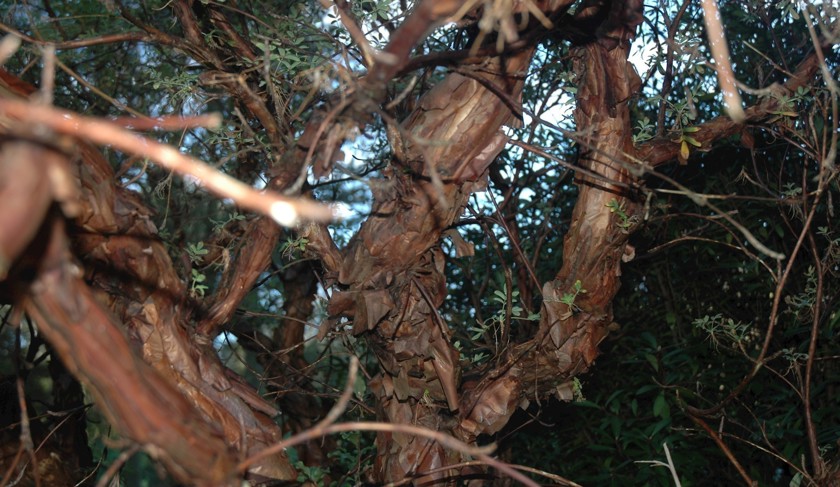
Look out for the rare Chonta palm, Juania australis in the Walled Garden. It is a rare plant endemic to the Juan Fernandez Islands west of Chile. A threatened species with very few examples in cultivation outside its native habitat, it is demanding and difficult to grow.
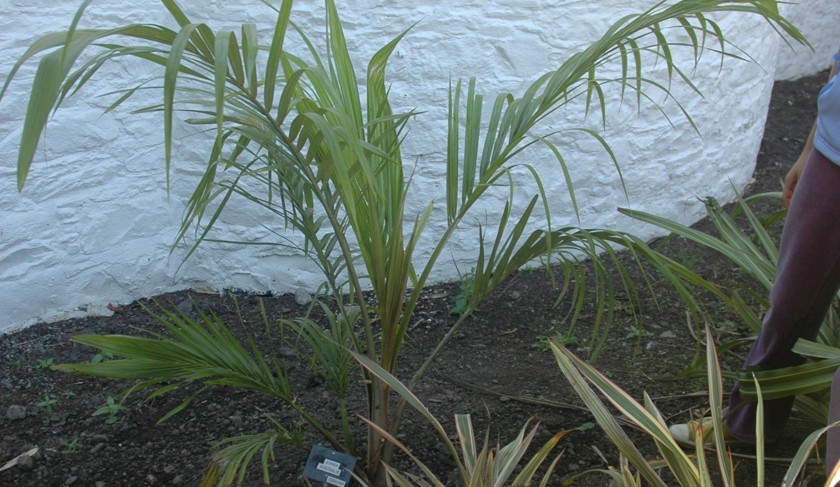
Plants from Southern Africa
A number of African genera, especially those grown from bulbs and corms, have species that make excellent garden plants. Look out for the aptly named angels' fishing rods of Dierama pulcherrimum around the Pond.
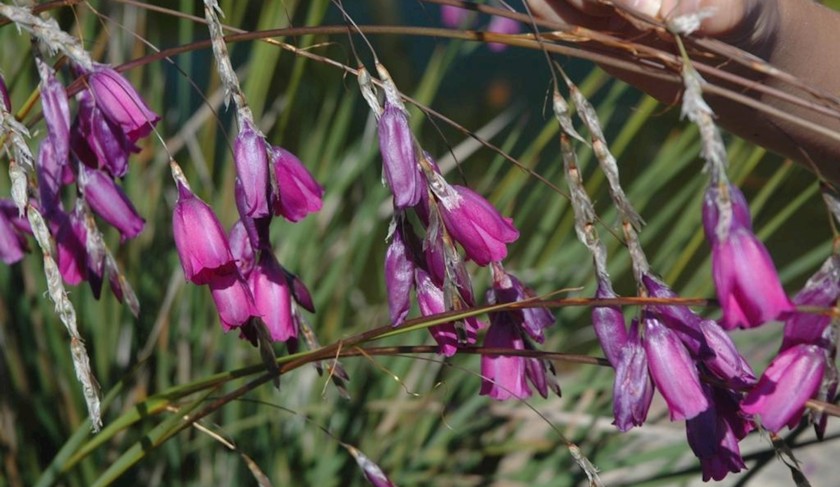
Several species and hybrids of Watsonia from the lily family bring more late-summer and autumn colour to the Garden, including the Watsonia pillansii, with its rich orange flower spikes.
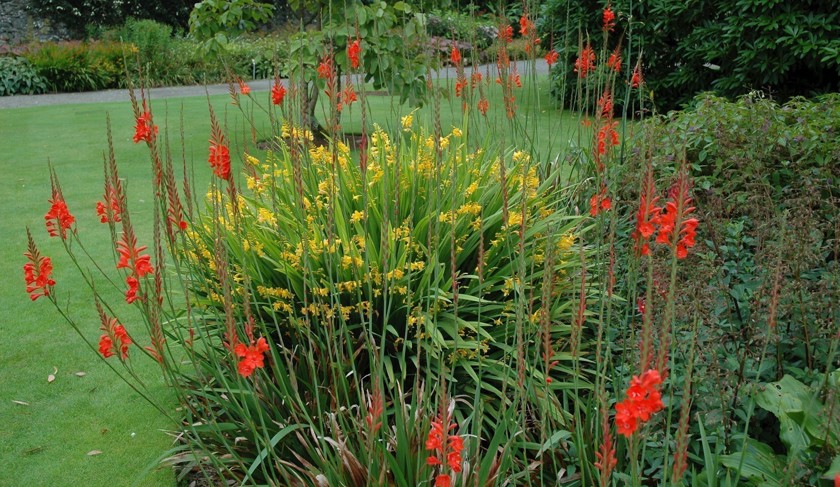
Gladiolus cardinalis , one of the most beautiful of all gladioli starts growing in autumn, produces shoots in winter and finally shows off its magnificent red and white flowers in early summer.
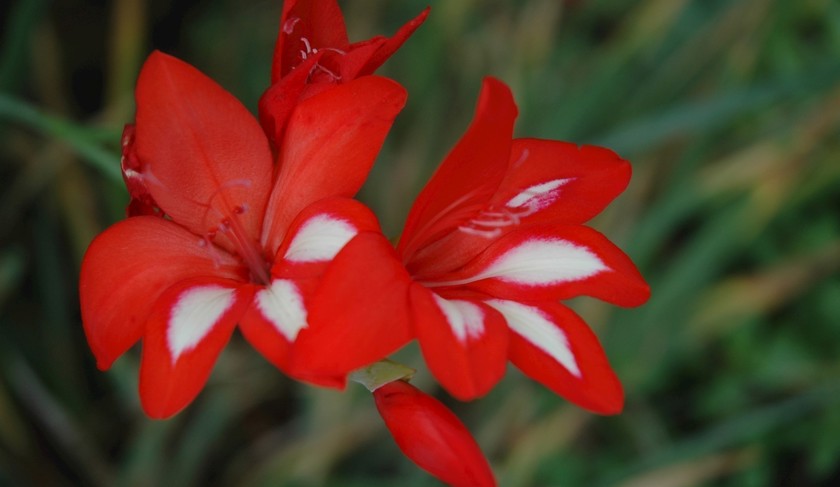
A splash of colour is added to the Garden in autumn by Nerine bowdenii.
Plants from the Atlantic islands
In the northern hemisphere, warm temperate islands such as Madeira and the Canaries have a climate that is not dissimilar to that of Logan.
The Atlantic island's greatest contribution to the Garden are various Echium species. E. nervosum is a large perennial commonly known as Pride of Madeira. It produces masses of vivid purple-blue flower spikes in early summer.
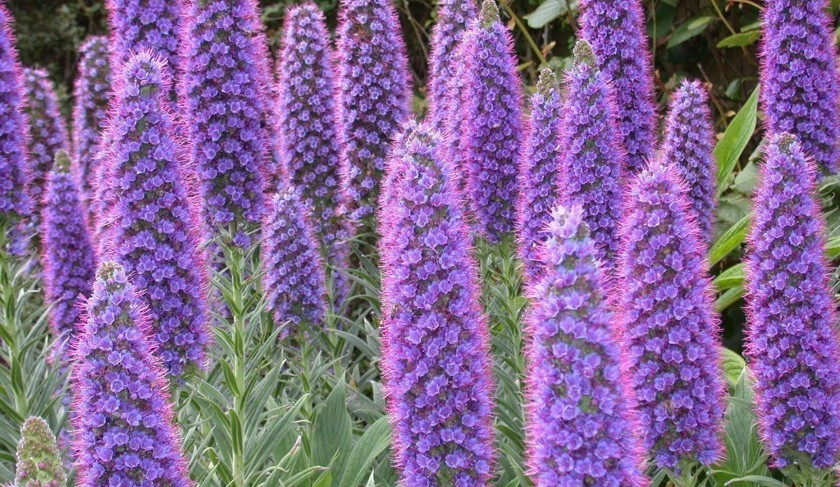
The Irish rose (Aeonium arboreum) hails from the Canary Islands. The evergreen succulent has striking rosettes of bright-green leaves. Look our for it in the desert border or at the entrance to the Walled Garden.
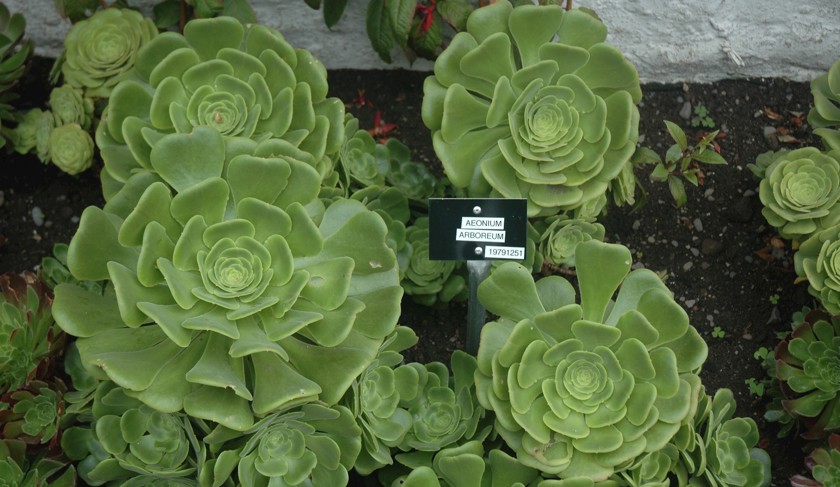
Wild flowers and ferns
More than 80 species of ground flora can be seen throughout the Garden, including irises, foxgloves, red campion and a number of wild grasses. Although Logan is home to a host of spectacular exotic ferns, a number of native species can be found too.
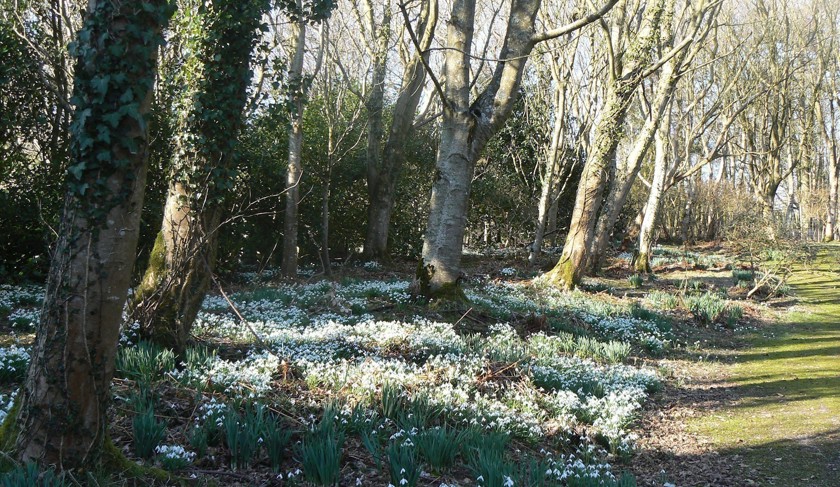
Carpets of snowdrops in early spring
The Logan Conservatory
The Garden's Victorian-style carbon neutral conservatory provides a real focus for exotic plants. It houses a collection from South Africa rarely seen growing on public display in the UK. The plant collection include Proteas, tree heathers, a pelargonium collection and tender South African bulbs.
